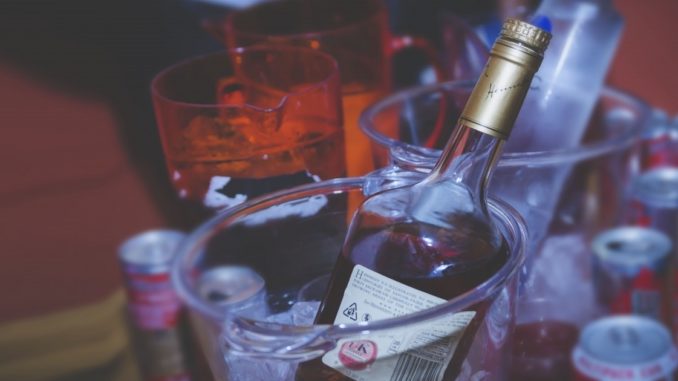
Welcome back to another episode of “Kin-Kytchen”, the show where food is the porn that binds us together.
For once, our audience’s erectile dysfunction not only doesn’t matter as far as performances go, but is also further emphasized through the one-man party of time immemorial: a hefty helping of Booze.
Booze as is commonly known is a word denoting manners of alcoholic beverages, the etymology of which for once comes from Middle English “bouse”, itself coming from Middle Dutch “būsen”, which means the exact thing that has delayed the writing and publication of this episode: “drink to excess”. While the first known use of this word pre-dates the 14th century, the activity itself is so old it may as well have been the reason behind all of existence. After all, when Jesus’s primary superpower is turning water into wine, you have to start asking yourself questions.
Now, putting aside the characteristics that make booze relatable to the point of making Chrysippus of Soli my spirit animal, we must mention that while the positives of standalone alcoholic beverages are innumerable, there is also an array of ways through which you can enhance your cooking through alcohol as an ingredient.
“I cook with wine, sometimes I even add it to the food.”
― W.C. Fields
One of the more commonly known cases of this absolute apex of cuisine is cooking with wine, often to draw from its acidic properties and flavor components, including sweetness and bitterness. Wine, for example, can often be used as a substitute for fat in dishes as a way to compensate for the lost moisture that comes as a consequence of reducing the fat content. That is not to say that you should remove the fat completely, but in cases where fat comes from the oil, it can be replaced even entirely in some cases.
Since wine is an acid ingredient, it also makes for a great addition in marinades where it not only helps tenderize the meat, but also adds flavor to it and keeps it moist even later on during cooking. That isn’t to say that cooking with wine is easy or that you can use it universally in all preparations, it’s more difficult to execute properly than you might think, like anything it takes time, knowledge, and practice, but it is a great addition to your culinary arsenal, and, specially if you like Italian cuisine, a good starting point in cooking with alcohol in general.
However, if you are more inclined towards bar food or would rather have your first experience with alcohol as an ingredient to be more forgiving and subtle, our next mention might just be the right starting point for you.
“Whoever drinks beer, he is quick to sleep; whoever sleeps long, does not sin; whoever does not sin, enters Heaven! Thus, let us drink beer!”
― Martin Luther
Yes, not even beer is just for drinking anymore, and as nice (and essential for survival) as it may be to just crack open a cold one with the boys, matching beer with food isn’t the limit of its relationship with your meal. Now one may ask, akin to connoisseurs of cinematography: is it vino? No, it’s not, but it’s still great nonetheless, and nowadays, when the craft brewing scene is growing more than ever before, it can be just as complex.
One of the best ways I know of how to use beer is to lighten up batter or eggs, where the carbonation of the beer works in a way that helps the mix become more airy and, as a consequence, also more crisp. The real amount of uses though is similar to those of wine, meaning that beer is also a great meat tenderizer and can be used to add flavor to dishes, enhance the taste, act as a deglazing agent, or even just as a less potent substitute for yeast.
Cooking with beer may actually make even more sense than cooking with other beverages, considering it has more in common with what we usually eat, since it contains grain, herbs, and yeast. Perhaps truer for beer too than for liquors and wines, is that if you wouldn’t drink the beer you use, you are much more likely to not like it in the recipe either. Given that you almost always reduce it, the flavors will be much more concentrated, and therefore the off-tastes that you deem unappealing will be more striking. Perhaps, the only real kind of beer to steer clear off are the low-carb ones, because these are achieved by brewing most of the sugars (read flavors) out.
“This is a good place,” he said.
“There’s a lot of liquor,” I agreed.”
― Ernest Hemingway
After having fooled around with wine and beer, the final frontier of cooking with alcohol are spirits and liquors, or well, any kind of alcohol you can imagine, really. While some are more standard like bourbon and vodka, rum and whiskey, one should not shy away from using even absinthe in their preparations. The amount of literature available on the subject is extensive, and gives you just that additional reason to always keep your best friends available in your pantry. Well, best friend unless you’re one of those weirdos that actually enjoys socializing with people, how horrifying.
At the very least for the sheer variety of booze available, and it being a partner in times of need, whenever they may be, booze is more than deserving of making it onto our list of food porn items.

Leave a Reply